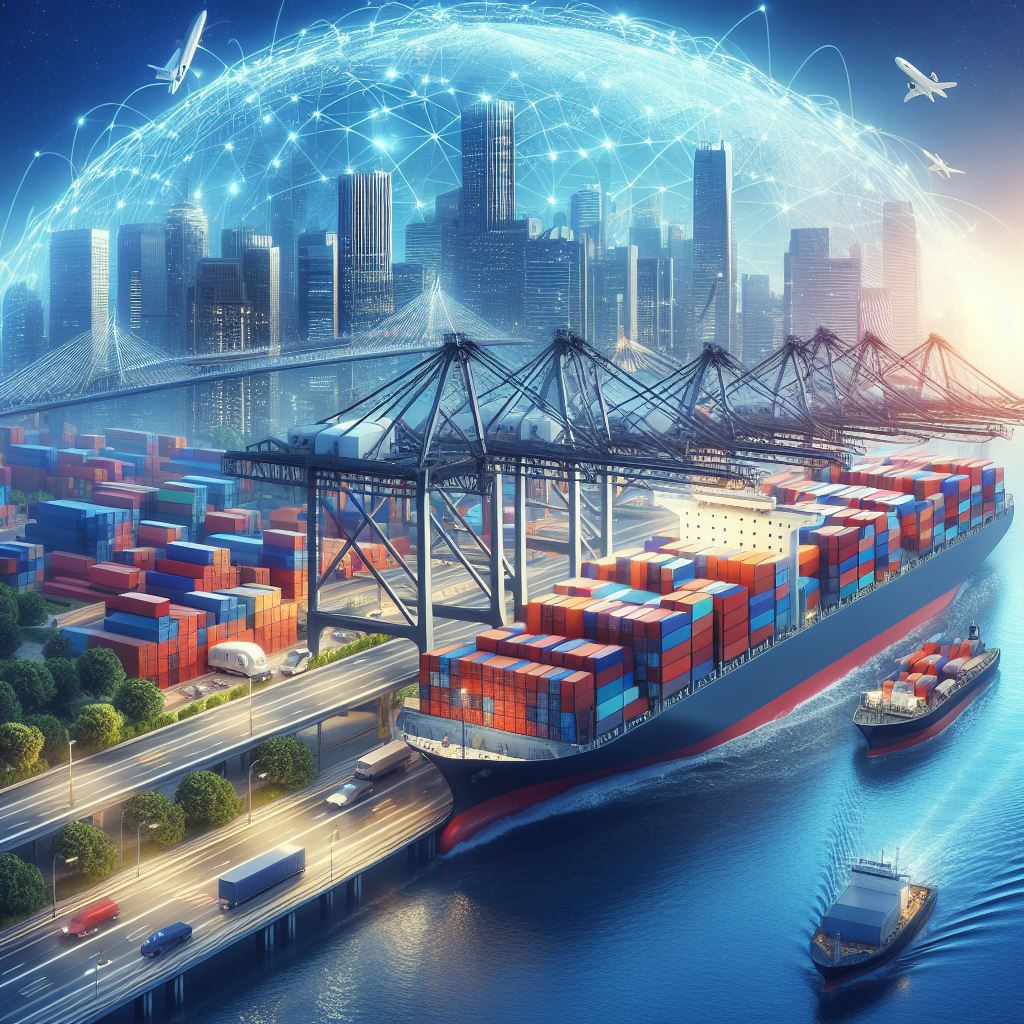
Container shipping is a process that facilitates the cross-pollination of ideas and practices across borders. These standardized containers traverse vast oceans, carrying with them the essence of diverse cultures and civilizations. Through their journeys, they dissolve geographical boundaries, enabling the dissemination of cultural treasures and fostering mutual understanding among peoples.
One of the most tangible manifestations of this cultural exchange is evident in the realm of cuisine. Exotic spices, specialty ingredients, and traditional delicacies find their way into distant markets, tantalizing palates and sparking curiosity about distant lands. Container shipping enables the transportation of artworks, artifacts, and handicrafts, allowing the beauty and heritage of one civilization to resonate with audiences across the globe.
The Genesis of Global Trade Routes
The genesis of global trade routes heralds a new age wherein the pursuit of spices, silk, and other exotic goods forged connections between distant civilizations. This network, which originated in antiquity, has evolved over time, propelled by advancements in navigation and maritime technology, to encompass intricate corridors that not only facilitate the transportation of commodities but also foster the exchange of cultural artifacts and ideas.
The advent of container shipping in the mid-20th century revolutionized these exchanges, ushering in an era of unprecedented efficiency, security, and expansive reach. Containerization transformed once-sleepy docks into vibrant hubs of cultural convergence, where each container unloaded tells a tale of distant lands and diverse traditions.
The innovation of containerization streamlined logistical processes, reducing loading and unloading times while enhancing cargo security during transit. As a result, goods from every corner of the globe traverse these maritime corridors with greater speed and reliability, connecting markets and consumers in ways previously unimaginable.
Containerization facilitated the globalization of trade by standardizing shipping practices and reducing costs, thereby democratizing access to international markets for businesses large and small. This democratization of trade has spurred economic growth, empowered entrepreneurs, and facilitated the cross-pollination of ideas and cultures on a scale unparalleled in human history.
The Role of Containers in Cultural Exchange
Thanks to containerized trade, ingredients once confined to distant regions now populate supermarket aisles worldwide. Specialty foods, exotic spices, and traditional beverages traverse oceans, introducing diverse flavors to palates across the globe and democratizing access to local delicacies.
Beyond the realm of gastronomy, containers play a pivotal role in transporting artworks, crafts, and cultural artifacts, effectively bridging the gap between civilizations and making the heritage of one society accessible to another. This exchange cultivates a deeper sense of understanding and appreciation among peoples, fostering a more interconnected and culturally enriched global community.
The ubiquity of containerized trade has revolutionized the way cultures interact and influence one another. Through the seamless movement of goods and ideas, societies are interconnected in unprecedented ways, leading to the cross-pollination of traditions, customs, and artistic expressions. As containers traverse the seas, they carry the stories, histories, and identities of diverse peoples, contributing to the mosaic of human civilization.
Maritime Cultural Diffusion
The unseen force behind these cultural exchanges is the intricate network of global trade routes. As containers embark on their voyages, they carry pieces of culture, snippets of traditions, and sparks of innovation, facilitating a blend and evolution of ideas.
Case Studies of Cultural Diffusion
- The Silk Road Redux. Just as the ancient Silk Road was instrumental in exchanging goods and culture between Asia and Europe, today’s maritime routes continue to serve as corridors for cultural diffusion.
- Sushi Globetrotting. A cuisine once exclusive to Japan, sushi has found its way into the mainstream dining scene worldwide, thanks in part to the ease of transporting key ingredients like nori and sushi-grade fish across continents.
- Fashion Fusion. The global fashion industry, fueled by container shipping, merges styles and influences, introducing traditional designs to new markets and inspiring fusion trends.
Containerized Trade and Culture
Containerized trade serves as more than a mere conduit for the exchange of cultural artifacts and culinary delights; it also acts as a vital channel for the transmission of ideas and the stimulation of innovation. This dual function enhances societies economically and enriches them intellectually and artistically.
The inflow of goods and concepts from around the world presents a challenge to local customs and industries, compelling them to evolve and find new avenues in response to changing demands. This process often leads to the rejuvenation of indigenous crafts and traditions as they discover fresh markets and applications for their products. Simultaneously, exposure to diverse cultural practices sparks interest and admiration, nurturing a more inclusive and cosmopolitan worldview among individuals and communities.
Containerized trade enables the seamless exchange of goods and concepts across borders, fostering cross-cultural dialogue and collaboration. As products and ideas traverse the globe within standardized containers, they break down geographical barriers, facilitating the dissemination of knowledge and the fostering of new partnerships.
Containerized trade fosters economic growth by streamlining logistical processes and reducing transportation costs.
Steering Through the Future
Preserving cultural identity emerges as a multifaceted challenge. While trade routes serve as conduits for traditions, they also introduce influences that may overshadow or dilute local customs. Striking a delicate balance between embracing global integration and safeguarding cultural heritage stands as a pivotal endeavor for societies worldwide.
The environmental impact of shipping casts a shadow, raising profound concerns ranging from carbon emissions to ocean pollution. Embracing sustainable practices in maritime logistics emerges as a paramount task to ensure that the cultural exchange facilitated by container shipping remains harmonious with the planet’s well-being.
Advancements in shipping technologies herald promising opportunities to revolutionize container shipping practices. From the adoption of cleaner fuels to the implementation of automated ports, these innovations hold the potential to not only enhance the efficiency of maritime logistics but also mitigate its environmental footprint. By embracing such technological advancements, stakeholders can strive towards making container shipping more sustainable and less harmful to the planet.
The integration of sustainable practices in shipping stands as a beacon of hope. It safeguards the cultural heritage intertwined with maritime trade routes.
Stakeholders must remain vigilant in addressing the challenges posed by global integration while embracing the opportunities presented by technological advancements. By prioritizing sustainability and cultural preservation, societies can forge a path to a more interconnected yet resilient future where the exchange of ideas, goods, and traditions thrives in harmony with the planet.


